America’s Monumental Dinosaur Site
For the first time in years, visitors can once again see the nation’s most productive Jurassic park
/https://tf-cmsv2-smithsonianmag-media.s3.amazonaws.com/filer/Dinosaur-National-Monument-aerial-631.jpg)
As you approach Dinosaur National Monument—America’s most celebrated dinosaur graveyard—you can’t miss all the prehistoric beasts dotting the roadside. To the east, tail-dragging, misshapen dinosaur statues that would make a paleontologist cringe menace the small town of Dinosaur, Colorado. To the west, monsters stalk Highway 40 from downtown Vernal, Utah to the entrance of the park. A miniature “Brontosaurus” stands behind a chain link fence at a Sinclair gas station, and a lumpy Diplodocus with a goofy smile greets visitors turning off the highway.
Actual dinosaurs were discovered here a century ago. Starting in 1909, fossil hound Earl Douglass found fantastic remains of gigantic dinosaurs, and his timing was perfect. The great natural history museums of the East—in New York, Pittsburgh, Chicago and Washington, D.C.—were competing to acquire the biggest and best dinosaur specimens in a great Jurassic dinosaur rush. Douglass uncovered fossils of Apatosaurus, Diplodocus, Barosaurus, Allosaurus, Ceratosaurus, Stegosaurus and more, and his finds helped fill collections.
Unlike many other bone hunters, though, Douglass did not excavate all the fossils he could. In a letter to Charles Doolittle Walcott, then the Secretary of the Smithsonian Institution, he wrote: “I hope that the Government, for the benefit of science and the people, will uncover a large area, leave the bones and skeletons in relief and house them. It would make one of the most astounding and instructive sights imaginable.”
He got his wish. In 1915, Douglass’ field area was turned into a national monument. Its highlight has been a particularly rich deposit of dinosaur bones, known simply as the quarry wall, that was protected by an intricate glass building since 1958. Millions of visitors watched paleontologists pick away at the 150-million-year-old rock face to expose the full extent of the mass grave. But in 2006, the structure was judged unstable and the area was closed. This past fall, a new observation center was opened to the public, and visitors can now once again see the nation’s most productive Jurassic park.
But the fossil riches of Dinosaur National Monument extend beyond the quarry wall, and paleontologists continue to make new discoveries that Douglass and his contemporaries could only have imagined. Last summer I hiked out to the field sites and visited some of the labs where the monument’s prehistory is being revealed.
Randall Irmis, the Natural History Museum of Utah’s paleontology curator, was leading a team studying a curved cross-section of rock striped with reds, browns and yellows called the Racetrack. I joined them for a week and a half to prospect for fossils, watching out for rattlesnakes and picking itchy cheatgrass out of my socks as I followed the fossil hunters along the steep exposures. The rock is about 200 million to 220 million years old, a period when the dinosaur dynasty was on the rise.
No one knew what might be in these rocks; this was the first systematic survey. The team found numerous burrows of small invertebrates that lived in sediments of ancient lakes, some vertebrate bones and, most intriguingly, some distinctive three-toed tracks that could only have been made by dinosaurs. The shapes and claw impressions were sure signs that small predatory dinosaurs once roamed the area.
Traces of prehistoric life also abound in a roughly 185-million-year-old layer of pockmarked sandstone, including footprints left by some of our own distant cousins. On one cloudy morning, park paleontologist Dan Chure, paleontologist George Engelmann of the University of Nebraska, Omaha and I hopped into an SUV and bounced up a pair of runnels towards a wide slab of tilted rock covered in nickel-size divots. At midday it would look like just another bit of stone on the wall of a small, shrub-filled gorge, but as the clouds burned off and the angled light of the rising sun shone on it, more than 300 small, rounded footprints stood out in relief against their sandstone bed. A few still have the scratches of tiny prehistoric claws. Chure’s discovery of the site in 2009 caused the paleontologist to rethink what might be found in the Early Jurassic rock of the monument and what the fossils might look like. After scrambling up the slab to point out the trackways, Chure stood on the footprints of his ancient kin and said: “When we saw this, we said ‘Yeah, we have to expand our search image a bit.’”
The tracks were most likely made by therapsids, archaic forerunners of mammals. The creatures were covered with fur and had teeth in a variety of different shapes, characteristics that set therapsids apart from reptiles. The creatures shuffled up and down massive sand dunes during a time when the area looked like the Gobi Desert. The fact that so many small creatures left tracks hints at the ancient ecology—they could not have survived in a totally dry desert. “There’s a good possibility there was some kind of water nearby” in the form of a lake or other oasis, Engelmann said. Since the slab is far too large to extract, Chure and Engelmann plan to pour latex over the rock and make a peel of all the tiny footprints to study how the hairy little critters moved around.
During the time that therapsids were skittering over ancient dunes, a group of more than 20 predatory theropod dinosaurs died during a drought. If they had held out a little longer they might have survived, for water soon covered their bodies, and their carcasses become preserved in a temporary pond. Three years ago, on the last day of the summer field season, Chure and Engelmann found the theropod bones just outside the park boundary and, with their Brigham Young University (BYU) colleague Brooks Britt, collected as many bits and pieces as possible.
I saw the bones laid out on the dusty laboratory tables of BYU’s Museum of Paleontology. The whine of air-powered tools and the sound of rock being scraped from bone filled dusty workspace. The startlingly white bones looked as if they had come from a recently deceased animal, but a closer look guided by Chure and Engelmann left no doubt that these were the petrified remains of juvenile dinosaurs. Bits of skull set with recurved teeth, hollow bones, and even a prehistoric wishbone or two were clues that a group of slender predatory dinosaurs had died and gone to pieces in the same place. “You can count the number of fossil vertebrates from [early Jurassic] deposits on one hand, and not all of that hand,” Chure said. “This is the biggest Early Jurassic theropod collection in the Western Hemisphere, possibly the world.” Britt chimed in: “It’s a gold mine!”
This dinosaur species still lacks a name, though Britt, Chure and Engelmann believe it is closely related to a more recent theropod called Coelophysis. These gracile dinosaurs had narrow, triangular heads, long necks and lightly built bodies that stretched about 10 feet long. Based on how often they are found together, Coelophysis likely traveled in groups. No complete, articulated skeletons of the new species have been found, but the state of their bones suggests how they died. Given the arid habitat and the fact the juvenile animals often die in droughts today, the working hypothesis is that the dinosaurs died of thirst and their bodies were preserved when water covered their bones. Their bodies sat in a temporary pool for long enough that the skeletons fell apart. The bones are well preserved, hinting that the dinosaurs died shortly before the return of the rains they so desperately needed.
Tucked away in other drawers at the BYU lab are four skulls, ranging from nearly complete to little more than a set of dinosaur “dentures,” or snout and teeth, from a 104-million-year-old sauropod dinosaur recently discovered at the monument. Named Abydosaurus mcintoshi, this dinosaur is helping fill in a gap in dinosaur history that has long frustrated paleontologists. For many years it seemed that the great long-necked sauropods went into a decline in North America about 145 million years ago, but Abydosaurus shows that these dinosaurs were still thriving in North America for much longer. And there is more left in the rock. With some carefully placed explosives, Chure and Britt hope to clear off an even larger exposure of the bonebed where Abydosaurus rests.
I'm glad the outdated, crumbling dinosaurs still stand along the road outside the park. The poor creatures are a baseline for dinosaurs as we used to know them—a historical remnant that shows us just how dramatically our understanding of these magnificent creatures has changed. Dinosaurs were not stupid, drab creatures destined for extinction (or to advertise hotel swimming pools). They were fantastic, vibrant animals whose avian descendants remain among us today. Through the beautiful swaths of geologic time exposed at Dinosaur National Monument, preserved thanks to Douglass' dream, we can gain a few glimpses into just how magnificent the Age of Dinosaurs truly was.
/https://tf-cmsv2-smithsonianmag-media.s3.amazonaws.com/accounts/headshot/RileyBlack.png)
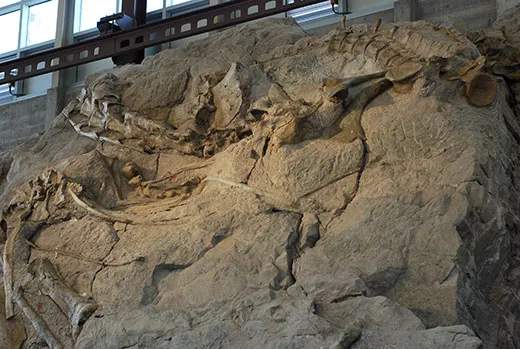
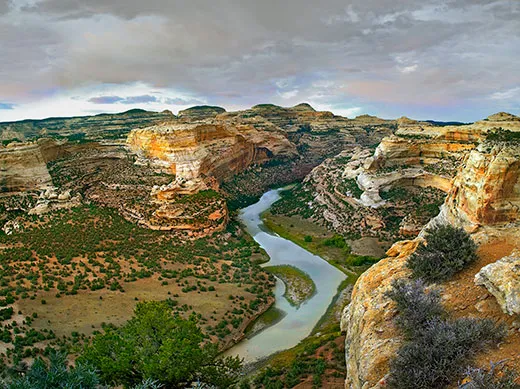
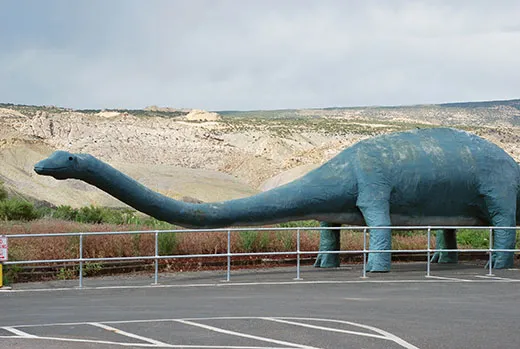
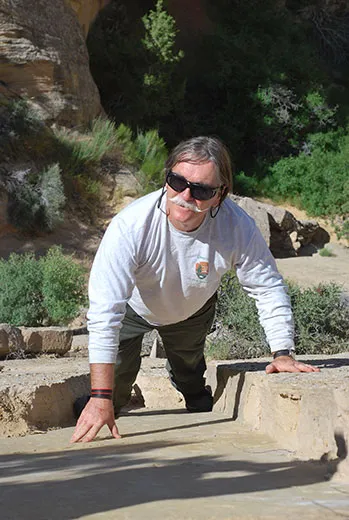
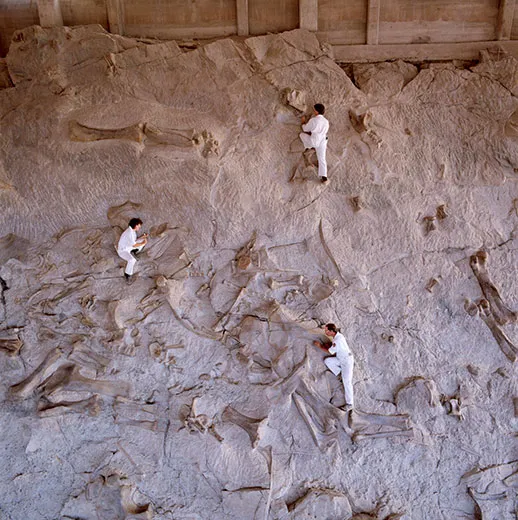
/https://tf-cmsv2-smithsonianmag-media.s3.amazonaws.com/accounts/headshot/RileyBlack.png)